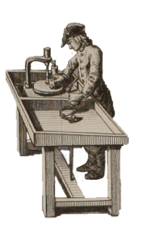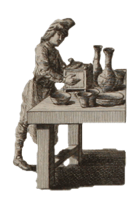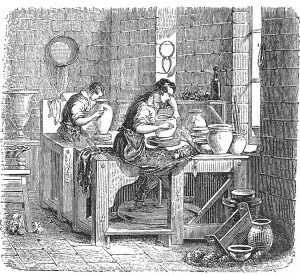
After purifying the materials, the makers had to combine them. They stepped on the materials with their feet in large wooden recipients made specifically for this until they had formed a homogeneous paste, hard and compact. After this, they would manually knead it piece by piece over slates. At this point, they had to be careful to eliminate any saline trace, because the tiniest impurity could ruin the whole paste.

Porcelain vases were made either with lathes or cast molds. Vases were usually made in molds, while small pieces like plates, cups, bowls, were made with a lathe. The relief works were molded and then finished with a chisel. Each section of the piece had its own mold, which were eventually combined into a full figure. The dough had to be kneaded until it softened, and then forcefully and manually made to fit the mold. In Sèvres, an apparatus helped force the dough into the mold with compressed air.

Every piece formed on molds was finished by hand with the aid of instruments that helped the maker unite, polish, cut and add different parts such as flowers and fruits, besides evening out any possible flaws. Therefore, the worker who finished the pieces had to be skilled in sculpture.